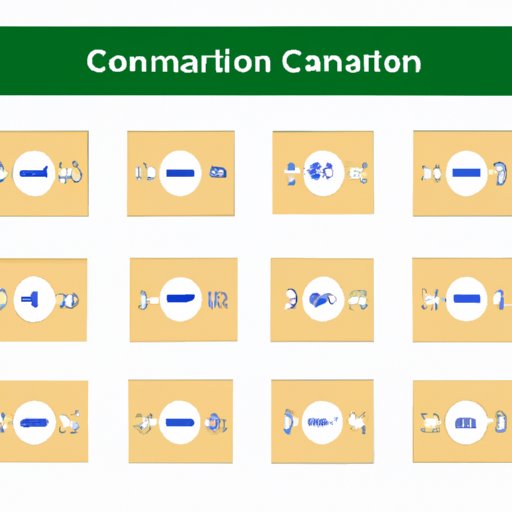
Introduction
When dealing with fractions, finding a common denominator is essential for performing mathematical operations and understanding the relationships between different fractions. A common denominator is defined as the same number that appears in the denominator of two or more fractions. In this guide, we will explore step-by-step how to find common denominators, real-life examples where finding common denominators is necessary, interactive graphics to visualize the process, common mistakes to avoid, and expert tips and tricks to make the process easier and faster.
A Step-by-Step Guide
The first step in finding common denominators is to identify the denominators of each fraction. Once you have identified them, find the lowest common multiple (LCM) of those numbers. This is the smallest number that is divisible by each of the denominators.
For example, if your two fractions are 1/6 and 2/9, the denominators are 6 and 9. The LCM of these numbers is 18, so you can adjust the fractions accordingly.
The next step is to adjust each fraction to have the same denominator. Divide the LCM by the denominator of each fraction and then multiply the numerator and denominator of each fraction by the same factor. This ensures that the value of the fractions does not change.
Using the example above, to adjust 1/6, divide 18 by 6, which gives 3. Then multiply both the numerator and denominator of 1/6 by 3, which gives you 3/18. To adjust 2/9, divide 18 by 9, which gives 2. Multiply both the numerator and denominator of 2/9 by 2, which gives you 4/18. Both fractions now have the same denominator, and you can perform mathematical operations on them.
Real-Life Examples
Knowing how to find common denominators is essential in many practical situations, such as cooking, building projects, or calculating measurements for crafts. For example, when cooking, you may need to adjust a recipe by doubling or halving the amount of ingredients. To do this, you need to be able to calculate fractions accurately and adjust them to their equivalent values.
Another example of where this skill is necessary is in building projects. When measuring and cutting lumber or other materials, you must be able to calculate fractions to ensure that everything fits together correctly.
Interactive Graphics
The use of interactive graphics or animations can be an effective way to visualize the process of finding common denominators. Visual aids can help make the learning experience more engaging and easier to understand, especially for younger or more visual learners. Online resources can provide step-by-step guides, videos, and interactive tutorials to help users understand and master the concepts involved in finding common denominators.
Common Mistakes to Avoid
There are many common mistakes people make when finding common denominators. One of the most frequent mistakes is not finding the lowest common multiple of the denominators properly. Another mistake is not multiplying both the numerator and denominator of each fraction by the same factor, which can result in fractions with different values.
To avoid these mistakes, it is essential to ensure that you calculate the LCM correctly and multiply numerators and denominators by the same factor to maintain the value of each fraction.
Expert Tips and Tricks
There are many tips and tricks that can help make finding common denominators faster and easier. For example, using prime factors can help calculate LCM more efficiently. Another handy tool is to remember the rule of thumb that the LCM of two numbers is the product of the two numbers divided by their greatest common divisor.
If you struggle with fractions, it can be helpful to work with a math tutor or teacher who can provide personalized guidance and support. They can also provide shortcuts or alternative methods to help you find common denominators more quickly and easily.
Conclusion
Knowing how to find common denominators is an important skill for anyone working with fractions. Whether it’s in cooking, building projects, or other practical situations, this skill is essential for accurate calculations and measurements. By following the step-by-step guide provided and utilizing expert tips and tricks, anyone can master the concept of finding common denominators. So, start practicing and applying what you’ve learned to be confident in using fractions in different contexts.





